
Carl Linnaeus, also known after ennoblement in 1761 as Carl von Linné, was a Swedish biologist and physician who formalised binomial nomenclature, the modern system of naming organisms. He is known as the "father of modern taxonomy". Many of his writings were in Latin; his name is rendered in Latin as Carolus Linnæus and, after his 1761 ennoblement, as Carolus a Linné.

William Roxburgh FRSE FRCPE FLS was a Scottish surgeon and botanist who worked extensively in India, describing species and working on economic botany. He is known as the founding father of Indian botany. He published numerous works on Indian botany, illustrated by careful drawings made by Indian artists and accompanied by taxonomic descriptions of many plant species. Apart from the numerous species that he named, many species were named in his honour by his collaborators.

Nikolaus Joseph Freiherr von Jacquin was a scientist who studied medicine, chemistry and botany.

Systema Naturae is one of the major works of the Swedish botanist, zoologist and physician Carl Linnaeus (1707–1778) and introduced the Linnaean taxonomy. Although the system, now known as binomial nomenclature, was partially developed by the Bauhin brothers, Gaspard and Johann, Linnaeus was first to use it consistently throughout his book. The first edition was published in 1735. The full title of the 10th edition (1758), which was the most important one, was Systema naturæ per regna tria naturæ, secundum classes, ordines, genera, species, cum characteribus, differentiis, synonymis, locis, which appeared in English in 1806 with the title: "A General System of Nature, Through the Three Grand Kingdoms of Animals, Vegetables, and Minerals, Systematically Divided Into their Several Classes, Orders, Genera, Species, and Varieties, with their Habitations, Manners, Economy, Structure and Pecularities".
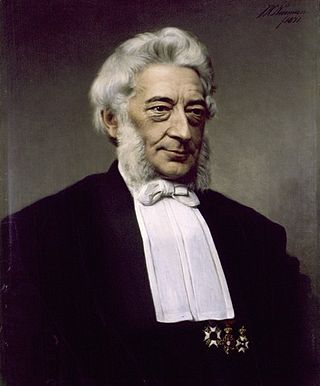
Friedrich Anton Wilhelm Miquel was a Dutch botanist, whose main focus of study was on the flora of the Dutch East Indies.

Species Plantarum is a book by Carl Linnaeus, originally published in 1753, which lists every species of plant known at the time, classified into genera. It is the first work to consistently apply binomial names and was the starting point for the naming of plants.

Georg Dionysius Ehret was a German botanist and entomologist known for his botanical illustrations.
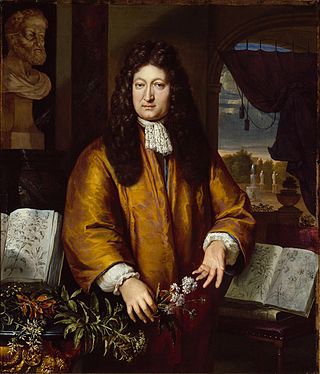
Jan Commelin, also known as Jan Commelijn, Johannes Commelin or Johannes Commelinus, was a botanist, and was the son of historian Isaac Commelin; his brother Casparus was a bookseller and newspaper publisher. Jan became a professor of botany when many plants were imported from the Cape and Ceylon and a new system had to be developed. As alderman of the city, together with burgomaster Johan Huydecoper van Maarsseveen he led the arrangement of the new botanic garden Hortus Medicus, later becoming Hortus Botanicus. He cultivated exotic plants on his farm 'Zuyderhout' near Haarlem. Commelin amassed a fortune by selling herbs and drugs to apothecaries and hospitals in Amsterdam and other Dutch cities.
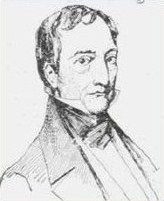
Luigi Aloysius Colla was an Italian botanist of the late 18th and early 19th centuries. He was a member of the Provisional Government of Savoy from December 12, 1798, to April 2, 1799, taking his turn as chairman of the government in rotation for a ten-day term. In 1820 Colla described two species, Musa balbisiana and Musa acuminata, that are the basis for almost all cultivated bananas. Colla was a member of the Philadelphia Academy of Natural Sciences.

Hipólito Ruiz López, or Hipólito Ruiz, was a Spanish botanist known for researching the floras of Peru and Chile during an expedition under Carlos III from 1777 to 1788. During the reign of Carlos III, three major botanical expeditions were sent to the New World; Ruiz and José Antonio Pavón Jiménez were the botanists for the first of these expeditions, to Peru and Chile.

Hortus Malabaricus is a 17th-century Latin botanical treatise documenting the varieties and medicinal properties of the flora of the Malabar coast. It was compiled in 12 volumes by Hendrik van Rheede, the Governor of Dutch Malabar from 1669 to 1676. Fr. Matheus of St. Joseph OCD a distinguished herbalist, was an Italian Carmelite Missionary and Van Rheede's friend.
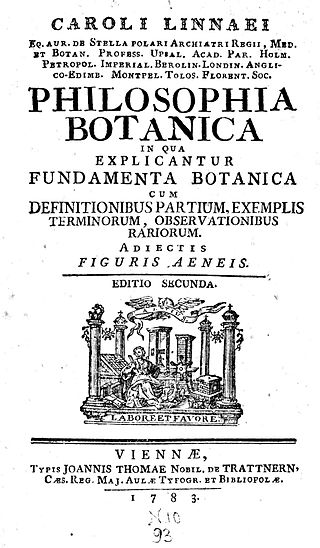
Philosophia Botanica was published by the Swedish naturalist and physician Carl Linnaeus (1707–1778) who greatly influenced the development of botanical taxonomy and systematics in the 18th and 19th centuries. It is "the first textbook of descriptive systematic botany and botanical Latin". It also contains Linnaeus's first published description of his binomial nomenclature.
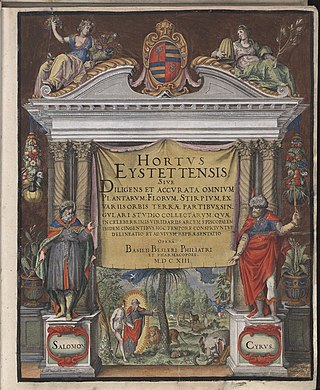
Hortus Eystettensis is the short title of a book produced by Basilius Besler, a Nuremberg apothecary and botanist, in 1613 describing the plants of the garden of the Prince-Bishop of Eichstätt in Bavaria. The Renaissance style garden was located at the bishop's palace at the Willibaldsburg and was created over eight terraces overlooking the city of Eichstätt. It was the first botanical garden in Germany, and the only one outside of Italy. The bishop had brought plants from all over the world for his garden, and it was thought that it contained examples of all of the shrubs and flowering plants known to horticulturalists at the time.
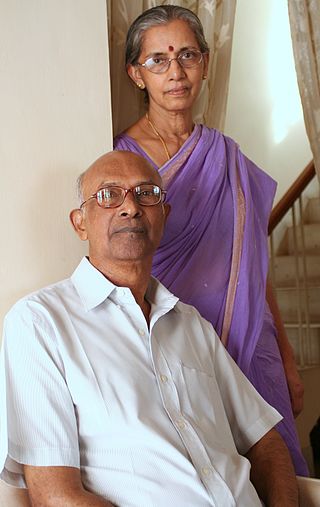
Kattungal Subramaniam Manilal is an Emeritus of the University of Calicut, a botany scholar and taxonomist, who devoted over 35 years of his life to research, translation and annotation work of the Latin botanical treatise Hortus Malabaricus. This epic effort brought to light the main contents of the book, a wealth of botanical information on Malabar that had largely remained inaccessible to English-speaking scholars, because the entire text was in the Latin language.
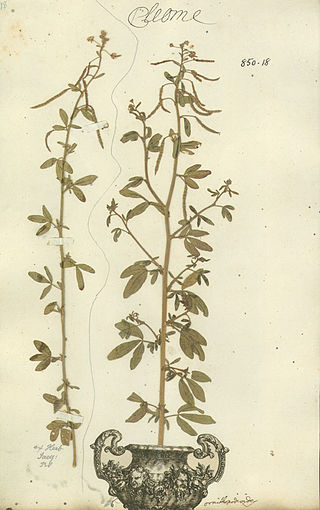
Cleome ornithopodioides or bird spiderflower is the type species of the genus Cleome which is part of the family Cleomaceae or Brassicaceae. The species epithet means "birds-foot like".

The bibliography of Carl Linnaeus includes academic works about botany, zoology, nomenclature and taxonomy written by the Swedish botanist Carl Linnaeus (1707–1778). Linnaeus laid the foundations for the modern scheme of binomial nomenclature and is known as the father of modern taxonomy. His most famous works are Systema Naturae which is considered as the starting point for zoological nomenclature together with Species Plantarum which is internationally accepted as the beginning of modern botanical nomenclature.

Johan Andreas (Anders) Murray was a Swedish physician of German descent and botanist, who published a major work on plant-derived medicines.

The Hortus Sanitatis, a Latin natural history encyclopaedia, was published by Jacob Meydenbach in Mainz, Germany in 1491.
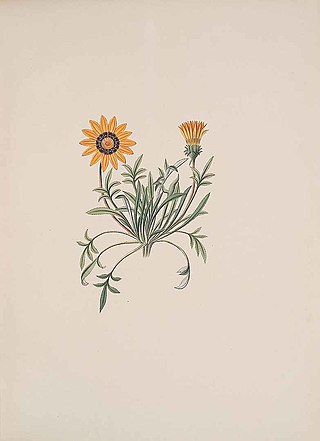
Johann Simon von Kerner was a German botanist and botanical illustrator, notable for his illustrations in Hortus sempervirens. Hortus sempervirens: exhibens icones plantarum selectiorum quotquot ad vivorum exemplorum normam reddere licuit. Stuttgartiae was 12 volumes published between 1795–1830 and issued in 71 fascicles with separate title pages, comprising 12 plates each. Plates accompanied by descriptive letterpress. 851 leaves of plates.

Nicolaas Meerburgh was a Netherlands gardener, botanist and botanical illustrator.

























